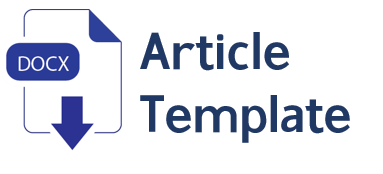The Effect of IT Use on Organizational Performance in Terms of Organizational Learning in the Healthcare Industry
DOI:
https://doi.org/10.30741/wiga.v12i3.820Keywords:
Information Technology, Organization Learning, Healthcare Industry, PerformanceAbstract
The use of IT has been massively used in improving organizational performance, including the performance of health institutions. Improved performance can be achieved by various schemes, one of which is increasing organizational learning. For this reason, this study is an attempt to examine information and technology in an effort to increase absorptive capacity in the role of organizational learning in the health care industry. The method used in this research is quantitative with an online survey. Structural equation modeling is used to analyze the path analysis test. The results of this study indicate that IT has a positive influence on organizational learning, both the first outcome, namely knowledge transfer and the second outcome, namely absorptive capacity, as well as on the performance of health care institutions. This research provides both theoretical and practical contributions. The theoretical contribution is adding literacy related to IT functions to improve organizational performance in the role of organizational learning. While, the practical contribution is to provide a view that in the implementation of IT it is necessary to pay attention to organizational learning so that IT functions properly.
Downloads
References
Alavi, M., & Leidner, D. E. (2001). Knowledge management and knowledge management systems: Conceptual foundations and research issues. MIS quarterly, 107-136. http://dx.doi.org/10.2307/3250961
Amor, E. A. E. H., & Ghannouchi, S. A. (2017). Towards KPI-Based Health Care Process Improvement. Procedia Computer Science, 121, 767-774. https://doi.org/10.1016/j.procs.2017.11.099
Cohen, W. M., & Levinthal, D. A. (1990). Absorptive capacity: A new perspective on learning and innovation. Administrative science quarterly, 128-152. https://doi.org/10.2307/2393553
Friedman, V. J., Lipshitz, R., & Popper, M. (2005). The mystification of organizational learning. Journal of management inquiry, 14(1), 19-30. https://doi.org/10.1177/1056492604273758
Greenhalgh, T., Potts, H. W., Wong, G., Bark, P., & Swinglehurst, D. (2009). Tensions and paradoxes in electronic patient record research: a systematic literature review using the meta‐narrative method. The Milbank Quarterly, 87(4), 729-788. https://doi.org/10.1111/j.1468-0009.2009.00578.x
Grigoroudis, E., Orfanoudaki, E., & Zopounidis, C. (2012). Strategic performance measurement in a healthcare organisation: A multiple criteria approach based on balanced scorecard. Omega, 40(1), 104-119. https://doi.org/10.1016/j.omega.2011.04.001
Hair Jr, J. F., Sarstedt, M., Ringle, C. M., & Gudergan, S. P. (2017). Advanced Issues in Partial Least Squares Structural Equation Modeling. SAGE Publications.
Hair, J. F., Risher, J. J., Sarstedt, M., & Ringle, C. M. (2019). When to use and how to report the results of PLS-SEM. European Business Review, 31(1), 2-24. https://doi.org/10.1108/EBR-11-2018-0203
Ives, B., & Jarvenpaa, S. L. (1991). Applications of global information technology: Key issues for management. MIS quarterly, 33-49. https://doi.org/10.2307/249433
Iyengar, K., Sweeney, J. R., & Montealegre, R. (2015). Information technology use as a learning mechanism. MIS quarterly, 39(3), 615-642. https://doi.org/10.25300/MISQ/2015/39.3.05
Khalifa, M., & Khalid, P. (2015). Developing strategic health care key performance indicators: a case study on a tertiary care hospital. Procedia Computer Science, 63, 459-466. https://doi.org/10.1016/j.procs.2015.08.368
Lee, J., Lee, H., & Park, J.-G. (2014). Exploring the impact of empowering leadership on knowledge sharing, absorptive capacity and team performance in IT service. Information Technology & People, 27(3), 366-386. https://doi.org/10.1108/ITP-10-2012-0115
Lyman, B., & Moore, C. (2019). The learning history: A research method to advance the science and practice of organizational learning in healthcare. Journal of Advanced Nursing, 75(2), 472-481. https://doi.org/10.1111/jan.13858
Lyman, B., Hammond, E. L., & Cox, J. R. (2019). Organisational learning in hospitals: A concept analysis. Journal of Nursing Management, 27(3), 633-646. https://doi.org/10.1111/jonm.12722
Malhotra, A., Gosain, S., & Sawy, O. A. E. (2005). Absorptive capacity configurations in supply chains: Gearing for partner-enabled market knowledge creation. MIS Quarterly, 145-187.
Manfreda, A., Kovacic, A., Štemberger, M. I., & Trkman, P. (2014). Absorptive capacity as a precondition for business process improvement. Journal of Computer Information Systems, 54(2), 35-43. https://doi.org/10.1080/08874417.2014.11645684
Pavlou, P. A., & El Sawy, O. A. (2006). From IT leveraging competence to competitive advantage in turbulent environments: The case of new product development. Information systems research, 17(3), 198-227.
Pinsonneault, A., Addas, S., Qian, C., Dakshinamoorthy, V., & Tamblyn, R. (2017). Integrated health information technology and the quality of patient care: A natural experiment. Journal of Management Information Systems, 34(2), 457-486. https://doi.org/10.1080/07421222.2017.1334477
Raymond, L., Paré, G., & Maillet, É. (2015). IT-enabled Knowledge Management in Primary Care Settings: An Absorptive Capacity Perspective. Thirty Sixth International Conference on Information Systems, Fort Worth 2015, 1-16.
Roberts, N., Galluch, P. S., Dinger, M., & Grover, V. (2012). Absorptive capacity and information systems research: Review, synthesis, and directions for future research. MIS quarterly, 625-648.
Robey, D., Boudreau, M.-C., & Rose, G. M. (2000). Information technology and organizational learning: a review and assessment of research. Accounting, Management and Information Technologies, 10(2), 125-155. http://dx.doi.org/10.1016/S0959-8022(99)00017-X
Spatharou, A., Hieronimus, S., & Jenkins, J. (2020). Transforming healthcare with AI: The impact on the workforce and organizations. McKinsey & Company, 10.
Statista. (2022). Social media in the asia-pacific region - statistics & fact. Retrieved July 19 2022 from https://www.statista.com/topics/6606/social-media-in-asia-pacific/#topicHeader__wrapper
Thilakarathne, N. N., Kagita, M. K., Gadekallu, T. R., & Maddikunta, P. K. R. (2020). The Adoption of ICT Powered Healthcare Technologies towards Managing Global Pandemics. 1-20. https://doi.org/10.48550/arXiv.2009.05716
Venkatesh, V., Zhang, X., & Sykes, T. A. (2011). “Doctors do too little technology”: A longitudinal field study of an electronic healthcare system implementation. Information systems research, 22(3), 523-546.
Volberda, H. W., Foss, N. J., & Lyles, M. A. (2010). Perspective—Absorbing the concept of absorptive capacity: How to realize its potential in the organization field. Organization Science, 21(4), 931-951.
Downloads
Published
How to Cite
Issue
Section
License
Copyright (c) 2022 Andri Rianawati, Ahmad Johan

This work is licensed under a Creative Commons Attribution-NonCommercial 4.0 International License.










